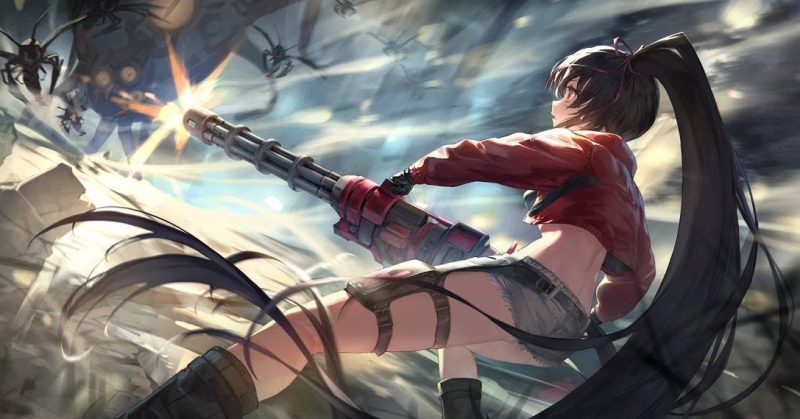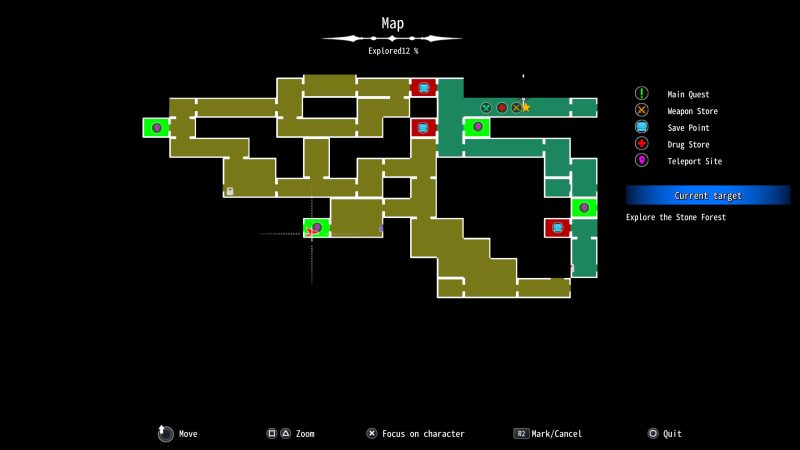Frontier Hunter: Ezra’s Wheel of Fortune Review (PS5) – Anyone even remotely familiar with Metroidvania games knows the sheer amount of titles found in that genre. Expectations are always high, but the pool is wide.
This always makes any new entry very easy to miss. New games like Frontier Hunter: Ezra’s Wheel of Fortune try to make themselves more appealing by making the experience easier than most.
While ease of access generally works well enough for Frontier Hunter, the blatantly obvious low budget approach to its narrative and presentation bring other shortcomings to the forefront.
That doesn’t stop it being a fun enough game, and it acts more like a palette cleanser than a memorable experience.
Frontier Hunter: Ezra’s Wheel of Fortune Review (PS5) – A Frustrating Experience Hidden By The Illusion Of Ease-Of-Access
Slap It Together And Call It A Day
Immediately after the opening cutscene starts, the very first thing you notice in Frontier Hunter is just how awkward cutscenes are. Character movement is robotic and awkward. The closest comparison I can come up with is those slapped together, fan-made videos of characters from different shows dancing and singing or doing skits.
Those characters all move in weird ways that are far too fast and robotic, and they always have weird facial expressions. Those are awkward for the sake of being awkward, and that’s the same energy I get in each of Frontier Hunter’s cutscenes.
Character design and writing all feel weird as well, like someone put a bunch of ideas through ChatGPT and shoehorned the result into a concept. You have scantily-clad anime women running a ship filled with people in full uniform. You know when you find a main character when their character model is half-clothed and features more finely-tuned design work and smoother edges than the rest of the characters.
Combine that with deeply trope-y characterizations (the second lady character you meet constantly makes hard passes at the main character out of nowhere) and forced plot points, and you find yourself in the middle of a story slapped onto a game.
Hints Of Metroidvania Roots
The strength of this game is in its gameplay. Frontier Hunter does nothing to push the Metroidvania genre forward, but it still manages to find success by not entirely getting in its own way.
What I mean by that is that the gameplay is somewhat simplistic but flashy and engaging enough to keep you moving forward. Animations pop every single time, and they often do devastating damage.
To help against any difficulty spikes you come across, Frontier Hunter sees you level up your characters, much like in Castlevania: Symphony of the Night and Bloodstained: Ritual of The Night. Whenever you return to a zone, all enemies respawn, making it very easy to grind out extra levels and materials.
Also, Frontier Hunter allows you to both equip and improve weapons and armor. Depending on your level of grinding, improving your equipment makes an already facilitating gameplay experience almost feel novel at times. By using materials and recipes you find in the world, you craft new equipment and unlock extra nodes to improve said equipment.
This improvement comes in the form of monster cores, which Tetris into the nodes you unlock in your gear. In doing so, you strengthen your gear by adding extra stats and bonuses.
The general formula of Frontier Hunter is to make things relatively easy to play and progress in, and the ability to improve your gear plays into that.
Easy Gameplay At First
In fact, the game makes combat even easier by making enemies easy to juggle. This means that you hit an enemy over and over, and they are unable to retaliate the vast majority of the time. Occasionally, some enemies glow blue, which makes them impervious to juggling.
Generally speaking, only larger enemies and bosses feature this temporary buff. They still take damage, mind you, but you still need to dodge their attacks.
Getting around the map is also easy. The game presents you with a traditional boxy map with different icons for significant markers. You can even place a bunch of markers on the map, which helps a great deal. Also, the map shows you where you need to go to complete a quest and where to turn in the quests.
Again, a nice little addition.
The game tries to counter this ease by giving you zones with even more enemies in them. Occasionally, you get juggled by a bombardment of projectiles or a long charge attack from a larger enemy.
Then, bosses progressively present more complicated attack sequences than the last. Regardless, much of the danger in Frontier Hunter is avoidable and easy to overcome. For a game like this, the ease of access makes it more appealing in general. It’s just that the efforts to present difficulty fall flat.
However, as you encroach the end of the game, enemies regularly find ways to juggle your characters to death. Yes, I mean multiple characters. Take the Face Monster, for example, who hits you with all kinds of attack types the game hasn’t presented to you yet. While most are self-explanatory, the laser beam it uses absolutely destroys your characters.
The Face Monster also shoots this beam parallel to the floor right at shoulder level for your character and for much longer than you can stay in the air.
The Inherent Flaws Take Over
This is the point where I finally realized just how frustrating hit-boxes are in Frontier Hunter. You would think that, since the beam is shoulder height, you could duck under the beam. However, the beam still hits you, even though your head never touches the beam. This also happens with its other attacks, but you get enough room to make it work.
The beam, though, shoots for so long that it can clear through all of your character’s health bars in short order. During that entire time, you can’t do anything but watch until the beam stops.
Then the ultimate problem is that boss hit-boxes are smaller than their shape. As seen in the screenshot above, this height is the lowest the Big Face Guardian can be hit. I had arcing projectiles hit the face at the lower curve of the chin and just pass right through. This happened over and over. What made this even more frustrating is that it made me think about previous bosses and how they weren’t so frustrating. No attacks from other bosses blocked off entire sections of the screen without a way to avoid said attacks.
Up until the last leg of the game, Frontier Hunter made its technical issues look less-impactful through making the experience easy. Then, when complicated mechanics appear, the inherent flaws in the game pop up.
I’ve played plenty of games where the difficulty spike at the end of the game goes through the roof. However, this one is unique in that the game convinces you that the game is a casual good time, despite its issues, only to be blindsided by those issues when the game gets harder.
Like I mentioned before, you can out-level everything and overpower every enemy. It just takes an excessive amount of time as you reach higher levels.
On a personal note, After investing six or seven hours into a Metroidvania only to be hindered like this feels like a betrayal from the developer. I’m a big trophy collector and enjoy completing a game’s trophy list.
When I hit this part of Frontier Hunters, I went from wanting to platinum the game to never wanting to play the game again.
Near The Bottom of The Metroidvania Totem Pole
Frontier Hunter: Ezra’s Wheel of Fortune does a good job of presenting a simplistic Metroidvania for much of the game. This makes the uneven hit boxes almost negligible until the effects hit you hard later parts of the game.
Combine that with a negligible narrative that presents itself through choppy cutscenes and character designs that look like they come straight from ChatGPT, and it creates an experience that feels like a waste of time.
There’s a decent game in Frontier Hunter, but you need to truly out-level everything along the way to enjoy it.
Frontier Hunter: Ezra’s Wheel of Fortune is available now on PS5, PC, and Xbox.
Review code generously provided by the publisher.




